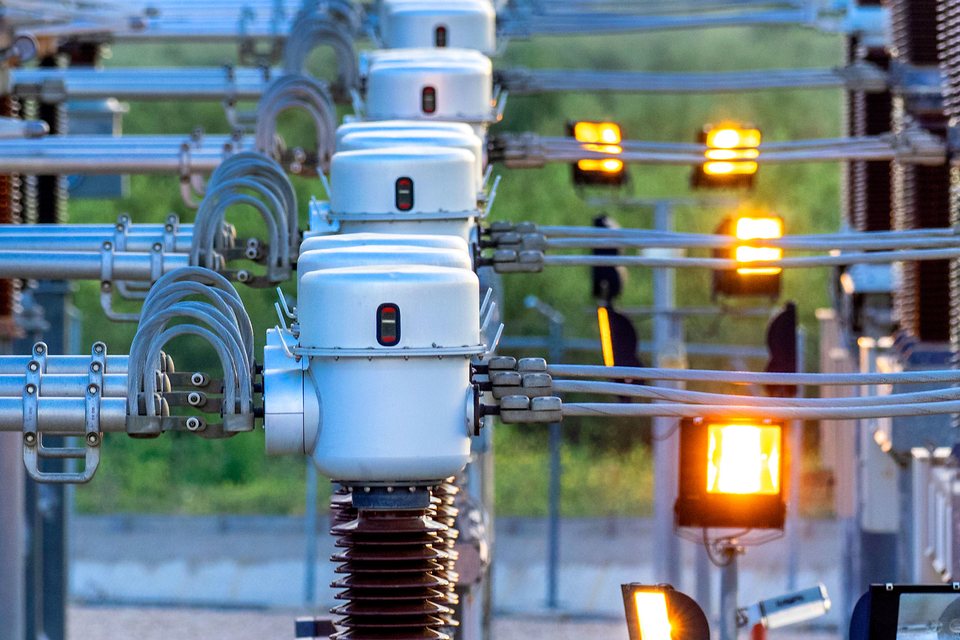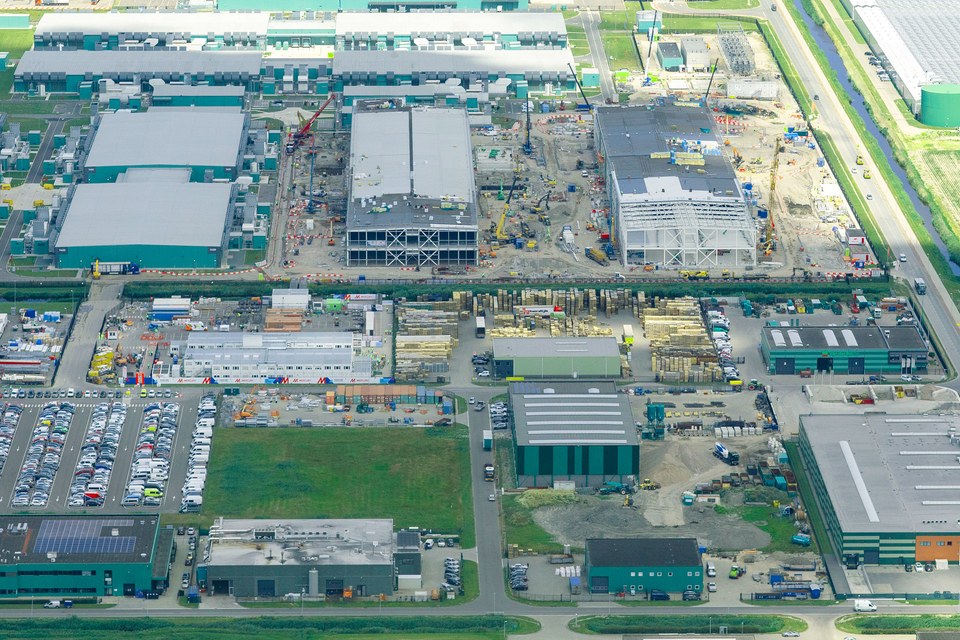Risk allocation and mitigation in energy projects
As the landscape for new energy projects evolves, parties are reassessing their appetite for risk and proactively seeking solutions to ensure success.

With an unprecedented momentum for the construction of new major projects linked to the shift away from fossil fuels and the development of a low-carbon economy, there is a real focus on construction law issues relevant to such projects
The widespread recognition of the urgent need to transition away from fossil fuels in energy systems, combined with a drive to decarbonize hard-to-abate industries, corporate and geopolitical tussles for supply chain security and market share for new green technologies, as well as various regulatory incentives and trade barriers, are collectively building unprecedented momentum for the investment in and construction of new major projects.
Such construction projects are no longer limited to wind, solar and other renewable energy; significant capital expenditure is also necessary to revolutionize heavy-emitting, fossil fuel-dependent industries such as steelmaking, alumina refining and cement production. This transformation may involve re-engineering existing plants to utilize clean energy sources and eliminate the need for coal and natural gas or adding carbon capture facilities to emitting plants.
As the transportation industry undergoes a revolution, entirely new industries are emerging, including pioneering projects for synthetic aviation fuel and gigafactories for batteries to support carbon-free mass transport. The rapid growth of the digital world, along with the current boom in Generative AI, is fueling the proliferation of data centers—one of the most energy-intensive building types—driving in turn their own need to limit electricity consumption and carbon footprint in order to achieve net-zero.
In this compendium, we take a closer look at the complexities and challenges of refurbishing and retrofitting brownfield industrial projects for a low-carbon future. We also explore methods for developing new data center projects in a more sustainable way, resulting in reduced carbon emissions.
The construction industry faces the challenge of finding appropriate and sustainable procurement and contracting structures for delivering these low-carbon projects. Many projects are of such scale or involve so many new technology risks that traditional procurement structures need to be revisited and challenged, often with the aim of better managing and sharing risks between the contracting parties, and ensuring the nurturing of new technologies.
We examine the growing use of multi-contract procurement structures in the US, and the use of collaborative contracting strategies in Australia, as well as an array of "green" contract provisions that have been introduced in FIDIC, NEC and JCT contracts to track ESG issues arising out of new construction projects.
Lastly, given that English law remains one of the dominant choices for governing major construction contracts in many jurisdictions, we conclude the compendium with an overview of the major recent developments in English construction law.
We hope you will find this compendium a useful and thought-provoking read, and look forward to exploring these themes as the landscape of major construction projects continues to evolve.
As the landscape for new energy projects evolves, parties are reassessing their appetite for risk and proactively seeking solutions to ensure success.

There is significant interest in investing into the rejuvenation of brownfield projects, but these projects face construction law challenges.

As the urgency to combat climate change escalates, the construction and engineering sectors are stepping up to the challenge. With a growing emphasis on net-zero solutions, contractual provisions tailored to sustainability are gaining momentum, highlighting a pivotal shift toward greener practices within these industries.

In recent years, escalation and price volatility have re-emerged in the global economy. The impact on large energy and infrastructure projects will be significant: Owners and contractors need to react and adapt.

As the demand for data storage grows, so does the need for more data centers with ever-increasing capacity. We examine new ways for developers to reduce energy consumption.

Amid the intricate landscape of Australia’s construction industry and geopolitical challenges looming large, collaborative contracting emerges as a powerful strategy for stakeholders across construction projects in Australia.

There have been a number of important developments in English construction law during the past two years, several of which relate to, or arose in the context of, building and fire safety. We examine their ramifications.


As the landscape for new energy projects evolves, parties are reassessing their appetite for risk and proactively seeking solutions to ensure success.
Risk plays a pivotal role in any energy construction project, and the allocation of risk is what a construction contract does. Project parties—owners, contractors and especially lenders—get comfortable with a certain level of risk based on what is customary for that type of project. However, sometimes one or another of these groups begins to think of the customary risk allocations as misaligned, and refuses to accept what used to be acceptable. New options are needed.
Risk plays a pivotal role in any energy construction project, and the allocation of risk is what a construction contract does
This is arguably happening today in the US with respect to two major types of energy projects: solar paired with battery storage (solar -plus-storage), where owners and their lenders are demanding change; and liquefied natural gas (LNG) and petrochemical projects, where contractors are balking at longstanding engineering, procurement and construction (EPC) arrangements. In both areas, use of a multi-party integration agreement may provide a solution.
Solar -plus-storage projects, by their nature, involve two major components: the specialized equipment such as solar panels, batteries, generator step-up transformers and inverters that will perform the main function of the completed project; and the work to prepare the site, to install and start up the equipment, and to integrate the systems.
The equipment is manufactured off-site by one or more third parties, using proprietary technology. For various reasons, including the high value of the equipment compared to construction and installation costs, the owner typically engages the manufacturers directly, through separate equipment supply contracts. Since each manufacturer's business is typically focused on producing and selling its product, and the manufacturer's location is likely distant from the project site, the owner must engage a different contractor to do the on-site work, generally via an EPC contract.
The resulting contractual structure, with the owner under separate direct contracts with two or more major contractors performing interrelated work at the same time in a multi-prime arrangement, exposes the owner to three serious interrelated risks.
The first is scope-gap risk. If it is debatable whether necessary work is within the scope of one contractor or another, each will be incentivized to disclaim responsibility for that scope. The owner will likely be in a weak bargaining position, needing to keep the project moving without spending undue time attempting to resolve the dispute, and has reason to avoid the problem by giving in to the contractors' position. This unfortunately gives the contractors an additional incentive to claim scope gaps.
Finger -pointing risk is a second major risk for multi-prime projects. If something goes wrong and it is not obvious which contractor is responsible, each contractor will be tempted to attribute the problem to the other contractor. This is similar to scope-gap risk, but applies not only to scope but also to matters such as defects and damage. Also similar to the scope-gap situation, an owner faced with finger -pointing contractors may be in a weak bargaining position.
Finally, knock-on risk anticipates the eventuality of one of the contractors damaging or delaying the other, forcing the owner to grant relief to the injured contractor. Such relief will typically be in the form of increasing the injured contractor's price or granting it additional time.
Although the owner may later have separate recourse against the offending contractor, this is far from ideal. The offending contractor may offer inadequate concessions or may deny responsibility entirely. In a case where the owner has to grant the injured contractor a time extension, there may be no clear way for the offending contractor to make the owner whole.
US$320 billion
Global solar PV investments in capacity additions surpassed US$320 billion in 2022, according to the IEA
In the solar -plus-storage context, these multi-prime risks have historically been tolerated by owners and lenders. Projects and risks were smaller and did not seem to merit bespoke arrangements. More recently, declining battery costs and new federal investment tax credits have led to a rapid growth in utility-scale solar -plus-storage projects. The prospect of bearing multi-prime risks on projects of this size and complexity is much more daunting, and many owners and their lenders are looking for new options.
The obvious solution to an owner's multi-prime risk concerns is for the owner to engage a single prime contractor that will be responsible for all elements of the project. This arrangement, embodied in the traditional lump-sum EPC contract covering the entire project, has for various reasons never been a workable option for most solar -plus-storage projects. It has, however, been the typical arrangement for most other types of energy projects, including LNG and petrochemical projects. The owner admittedly pays a premium for the privilege of shifting the multi-party risks down to the EPC contractor, but in exchange it gains a measure of control and assurance and, most importantly, renders the project bankable.
For an increasing number of contractors, this longstanding arrangement is no longer acceptable. Among other causes, projects have increased in scale and complexity, multiplying the risks assumed by a lump-sum EPC contractor with a guaranteed completion date. Such risks have been exposed in various high-profile instances of major international contractors pushed to the brink of collapse as a result of losses linked to cost overruns and delays. A number of engineering and construction firms, in the US and elsewhere, have reduced their involvement or even exited the lump-sum EPC business altogether to avoid similar outcomes.
If a lump-sum EPC is not an option for a project, and a multi-prime arrangement is similarly not feasible due to the scope-gap, finger -pointing and knock-on risks cited above, what options remain?
One promising possibility is to use an integration agreement structure. The first element of this structure is standard: The owner engages each of the principal contractors separately, using whatever form of contract it would typically use in a multi-prime arrangement, such as a lump-sum EPC for that contractor's specific scope. The second element is new: The owner and all of the contractors together enter into a multi-party integration agreement.
The integration agreement supplements the direct owner-contractor agreements. It provides the contractors with a forum and procedure for coordinating their operations and resolving their differences, in connection with their work under their respective direct owner -contractor agreements.
From the owner's perspective, the integration agreement substantially mitigates scope-gap, finger -pointing and knock-on risks, which are an inherent part of a multi-prime arrangement.
With respect to scope-gaps and finger -pointing, the integration agreement assumes that the contractors have together committed to deliver a complete and functioning project. Consequently, in the case of a scope-gap dispute, or in the case of a problem that gives rise to finger -pointing, the problem is more to determine which contractor is responsible than it is to determine whether a contractor is responsible.
Effectively, the burden of proof—to establish the owner's responsibility for alleged scope gaps, and to show that one contractor rather than another is responsible for a problem that emerges—is shifted from the owner to the contractors.
Additionally, the owner and its lender need the determination process to be expedited and streamlined in a way that will yield timely and decisive decisions that do not require the owner to bear risks that should be borne by one or both contractors.
To do this, the integration agreement could, for example, provide a special process for scope-gap disputes—and potentially also for inter-contractor disputes over amounts owed to the owner due to contractor defaults. Under this process, disputes are referred to the owner and the owner makes an expedited determination that the contractors must promptly follow.
If a contractor believes that the owner has misallocated responsibility that should belong to the other contractor, the provisions could have a process for the aggrieved contractor to raise its concern to the other contractor and resolve the dispute directly between the contractors. This type of process not only provides a way to resolve problems, but also gives the contractors a mutual incentive to coordinate their work and avoid scope disputes in the first instance.
An integration agreement provides contractors with a forum and procedure for coordinating operations and resolving differences under their direct owner-contractor agreements
With respect to knock-on risk, an essential element for the owner and its lender is that the owner cannot be held liable to one contractor for damage that is the other contractor's fault. In exchange for granting the owner this affirmative protection, the integration agreement can provide a process by which an injured contractor can seek recourse directly against the contractor that caused the injury. This recourse can be subject to reasonable limitations agreed between the contractors, such as waivers of consequential damages and any special negotiated caps. Additionally, unit prices and other negotiated pricing arrangements can simplify the process of quantifying a contractor's liability to the other.
To facilitate inter-party coordination and mitigate the threat of endless disputes, the integration agreement can also provide for a steering committee, with one representative for each of the parties, that will meet regularly to identify and attempt to resolve problems. Thorny issues can be elevated to an executive committee and, if not resolved at that level, can be pursued through a specified binding dispute resolution process.
Although the integration agreement structure is a new element in private energy projects, it is not an untried idea. For example, this structure is commonly used on public-private partnership projects in the US, where the parties to the integration agreement are typically the owner, the design-builder that constructs the project, and the contractor that will operate the project once it is constructed. Perhaps in part for this reason, lenders have shown interest in introducing the interparty structure into the private energy context.
For the multi-prime difficulties that threaten the expanding field of solar -plus-storage projects, an integration agreement structure could substantially mitigate the scope-gap, finger -pointing and knock-on risks that are plaguing owners and deterring lenders.
Likewise for other energy projects, including LNG or petrochemical projects, in cases where the lump-sum EPC model is no longer feasible, an integration agreement structure could provide a workable compromise that reduces the risks for contractors without leaving the owner with unacceptable exposure.
With a drive toward a lower carbon future continuing, and in an environment where contractors are rejecting traditional contractual arrangements, the need for new solutions is imperative. Thoughtful and creative use of models that have worked elsewhere can provide ways to mitigate the changing risk profile and ensure the success of new energy projects.
White & Case means the international legal practice comprising White & Case LLP, a New York State registered limited liability partnership, White & Case LLP, a limited liability partnership incorporated under English law and all other affiliated partnerships, companies and entities.
This article is prepared for the general information of interested persons. It is not, and does not attempt to be, comprehensive in nature. Due to the general nature of its content, it should not be regarded as legal advice.
© 2024 White & Case LLP